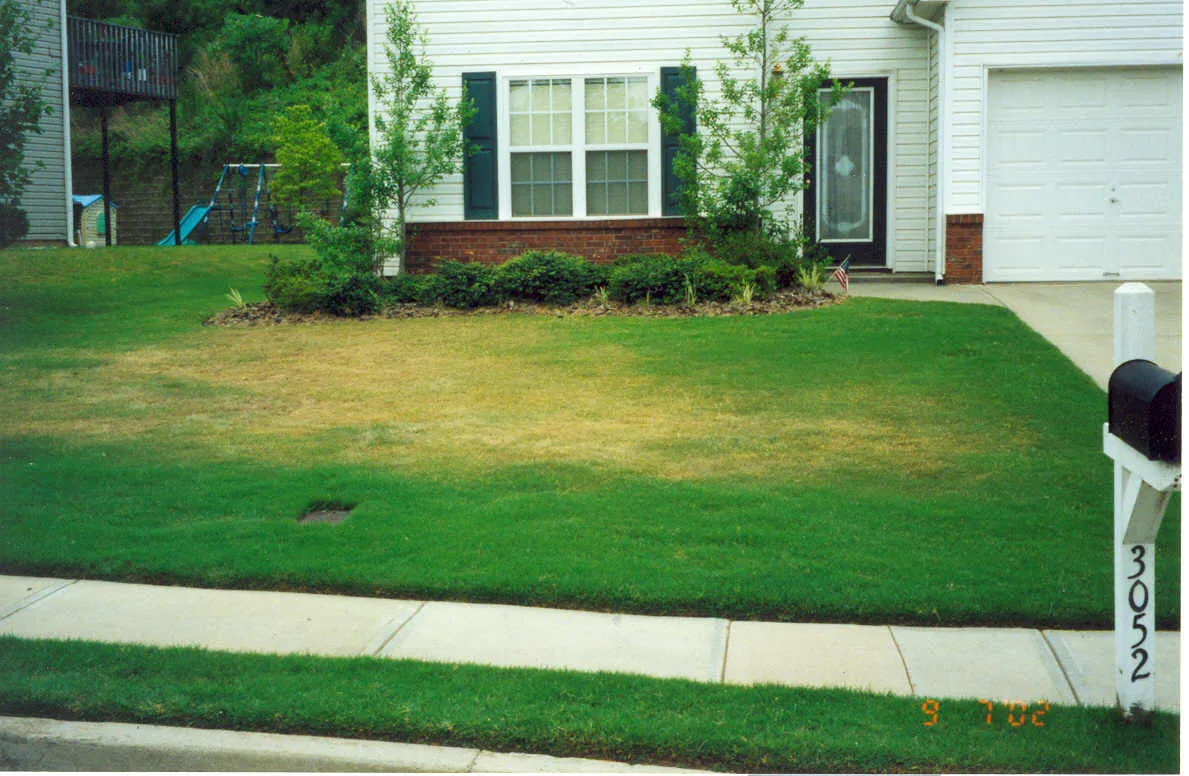That's great information to have. However, now you have brown spots in your Zoysia lawn and you want to know how to get them green again. Here is the approach I use on our client's lawns:
- INCREASE WATER: If the problem is drought stress, naturally the first step would be to increase the amount of water it's getting and how long it sits on the lawn. Many people will worry about their GRU water bill at this point, but it comes down to asking yourself, "what is more important?" A green vibrant lawn or your water bill? Only you can make that choice. There are several ways to increase the water gettting to your lawn's roots: (here is a tutorial on how to change your Gainesville irrigation timer settings)
- Increasing the frequency (watering more often)
- Increasing the duration (minutes that the zones run)
- Setting back the start time (running earlier in the morning so the water saturated the lawn longer before evaporation by the sun).
- HYDRETAIN - If the heat and drought is affecting your lawn, but the irrigation requirements or GRU bill consideration give you pause to increase your watering, the next step is to use a produsct called Hydretain. It's a product that alows your lawn to retain 50% more water than it currently does and will help your lawn utilize each ounce of water it gets to the fullest. Here is a link to learn about how it works. Long story short, it holds more moisture in the ground when in drought situations to help the grass stay healthy, and it's relatively inexpensive, too. It's only $95-$125 and lasts for 3 months (which is all we really need to make it through summer).
- THATCH - After you see your moisture in your soil increase, rake out the thatch from the dead areas to promote the regeneration of your Gainesville lawn. Currently, that thatch is acting like a mulch and buffer from the heat, helping to hold moisture on the soil longer and keep the soil cooler. But once the lawn starts to regrow, that thatch will actually deter it from rejuvenation. For that reason, after a few weeks of irrigation and hydretain, rake it out.
- PEST PREVENTION - Although Zoysia is chinch bug resistant, when it faces drought stress it can get insect damage. Similar to a human's immune system being lowered, Zoysia grass loses it's pest-resistance as it gets more stressed - and that attracts the lawn pests you don't want making your problem worse. Have your lawn sprayed by a licensed lawn pest control company.
Taking those 4 steps should have your lawn rejuvenated in a few weeks. As the green returns and the summer rains get re-started, you can back the irrigation times up and begin fertilizing for the fall.
If you feel that your irrigation system isn't functioning properly, we would love to schedule a $95 One-Hour Irrigation Tune-up with Mike, our sprinkler technician. If you feel that chinch bugs may be contributing to your brown lawn, schedule a meeting with our lawn pest control technician, Joe. If we can be of help in any way, please call our office at (352) 378-LAWN today, or fill out our online request by clicking the above links.


